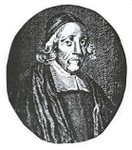Aspects of Piety 07
Style 1a
The 1911 Encyclopaedia Britannica says that Adams' 'numerous works display great learning, classical and patristic, and are unique in their abundance of stories, anecdotes, aphorisms and puns.' It argues that his printed sermons ‘placed him beyond all comparison in the van of the preachers of England’. It also quotes Robert Southey’s oft-repeated suggestion that he be considered ‘the prose Shakespeare of Puritan theologians’.
Britannica itself suggests he ‘had something to do with shaping John Bunyan’ and, following Southey, draws favourable comparisons with Thomas Fuller, for wit, and Jeremy Taylor, for imagination. Southey's actual statement is that Adams was ‘scarcely inferior to Fuller in wit or Taylor in fancy’ (see New Schaff-Herzog Religious Encyclopedia here). Stowell (p xvi) speaks of ‘the poetic splendour of the imagery’ in Taylor and Adams.
Note: Thomas Fuller (1608-1661) was a historian and preacher and one of the 17th Century’s most witty and prolific authors. (Left above). Jeremy Taylor (1613-1667) a theological and devotional writer, was a distinguished preacher and author of many noted works. He was made a bishop after the Restoration. (Right above).
Along with Adams’ known friendship with Donne, it is no surprise that he, like Bunyan and some few others, has attracted the attention of University English departments as well as historians and evangelical believers. See Moira Baker's essay here.
(Note: she lists 5 dissertations – her own The Homiletic Satires of Thomas Adams, Notre Dame, 1982; Cabell V Flanagan, A Survey of the Life and Works of Thomas Adams, Pennsylvania, 1954; David Mills Harralson, The Sermons of Thomas Adams, Kent State, 1969; Laurence Hedges, Thomas Adams and the Ministry of Moderation, California Riverside, 1974; Francis Xavier Prior, Animal Analogy in the Writings of Thomas Adams, St Johns, 1969.)
Adams has been spoken of as being ‘weighty in thought and vigorous in style’. (See Schaff-Herzog on preaching). Walsham refers to him as ‘That most poetical of Jacobean preachers’ (p 281).







No comments:
Post a Comment